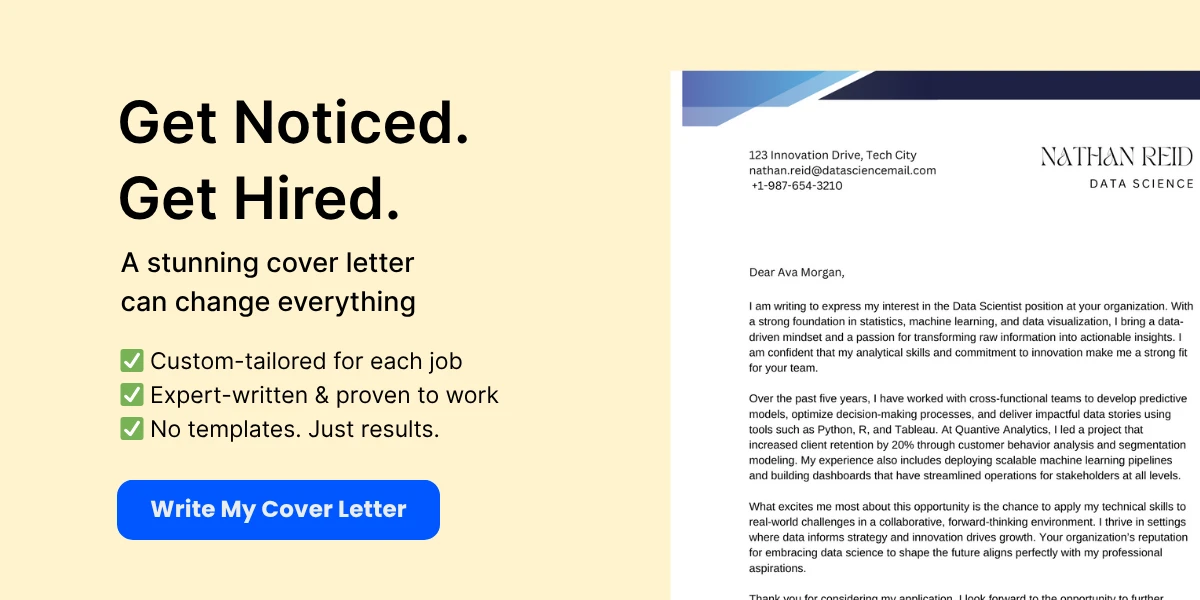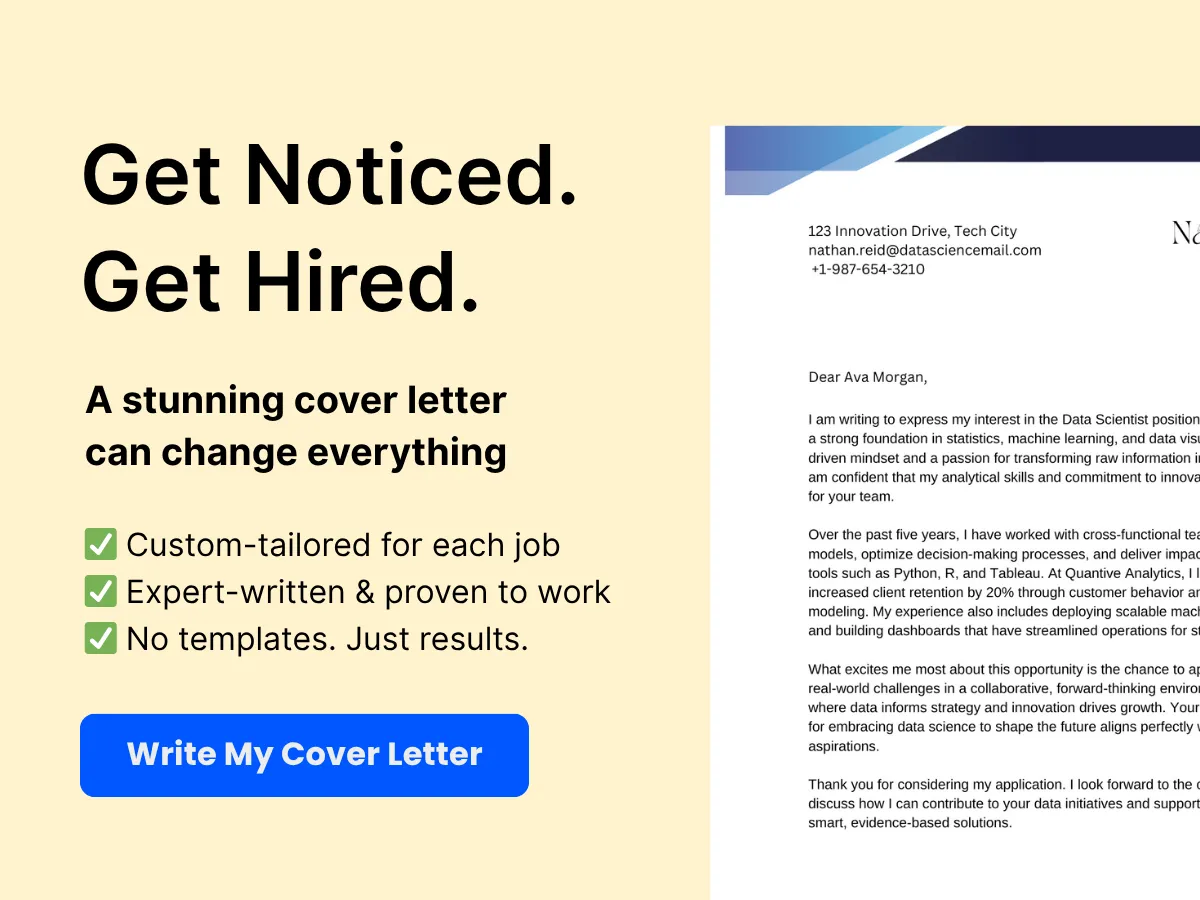In the digital age, your email signature is more than just a sign-off; it’s a powerful tool for personal branding and professional communication. Whether you’re a business owner, a freelancer, or simply someone who wants to make a lasting impression, customizing your Gmail signature can enhance your email’s effectiveness and convey your unique identity. As we step into 2024, it’s essential to stay updated on the latest features and best practices for creating a signature that stands out.
This comprehensive guide will walk you through the process of adding and changing your Gmail signature with ease. You’ll learn how to craft a signature that reflects your personality or brand, incorporate essential elements like social media links and images, and ensure it displays correctly across devices. By the end of this article, you’ll have the knowledge and confidence to create a signature that not only looks professional but also leaves a memorable impression on your recipients.
Exploring Gmail Signatures
Definition and Purpose
A Gmail signature is a block of text or images that is automatically appended to the end of your emails. It serves multiple purposes, including providing essential contact information, promoting your brand, and adding a personal touch to your communications. In a professional context, a well-crafted signature can enhance your credibility and make it easier for recipients to reach you. For personal use, it can be a way to express your personality or share a favorite quote.
In essence, a Gmail signature acts as a digital business card, offering a snapshot of who you are and how you can be contacted. It can include your name, job title, company name, phone number, website, social media links, and even a logo or image. The signature is particularly useful in maintaining consistency across your communications, ensuring that every email you send carries your branding and contact details.
Types of Email Signatures
Personal vs. Professional
When it comes to email signatures, the context in which you are communicating plays a significant role in determining the type of signature you should use. Here’s a breakdown of personal and professional signatures:


- Personal Signatures: These are typically more casual and can reflect your personality. A personal signature might include your name, a fun quote, or a link to your personal blog or social media profiles. For example:
Best,
John Doe
“Life is what happens when you’re busy making other plans”
Twitter | Blog
- Professional Signatures: In a business setting, your signature should convey professionalism and provide essential information. This type of signature often includes your full name, job title, company name, phone number, and links to your professional social media accounts or company website. For example:
Regards,
Jane Smith
Marketing Manager
ABC Corporation
(123) 456-7890
www.abccorp.com | LinkedIn
Text vs. HTML Signatures
Email signatures can be created in two primary formats: text and HTML. Each format has its advantages and disadvantages, and the choice between them often depends on your needs and preferences.
- Text Signatures: These are simple, plain-text signatures that do not include any formatting or images. They are universally compatible and will display correctly on all email clients. Text signatures are easy to create and maintain, making them a good choice for those who prefer simplicity. However, they lack visual appeal and branding opportunities. An example of a text signature might look like this:
Best,
John Doe
[email protected]
(123) 456-7890
- HTML Signatures: HTML signatures allow for greater customization and creativity. You can incorporate colors, fonts, images, and links, making your signature visually appealing and aligned with your brand identity. HTML signatures can include logos, social media icons, and even promotional banners. However, they may not display correctly on all email clients, especially if the recipient’s email settings block images or HTML formatting. Here’s an example of an HTML signature:
Best,
John Doe
Marketing Manager
ABC Corporation
[email protected] | (123) 456-7890
LinkedIn | Twitter
Choosing the Right Signature for Your Needs
When deciding between a personal or professional signature, as well as text or HTML formats, consider the following factors:


- Audience: Who are you communicating with? If you’re emailing a colleague or a client, a professional signature is more appropriate. For friends or family, a personal signature may be more fitting.
- Branding: If you represent a business, an HTML signature that includes your company logo and branding elements can enhance your professional image. For personal emails, a simple text signature may suffice.
- Compatibility: If you’re unsure whether your recipients will be able to view HTML signatures correctly, opting for a text signature can ensure that your message is received as intended.
- Functionality: Consider what information you want to convey. If you need to include multiple links or images, an HTML signature is the way to go. If you only need to provide basic contact information, a text signature will do.
Ultimately, the choice of signature should reflect your personal style and the context of your communication. A well-designed signature can leave a lasting impression, so take the time to craft one that aligns with your identity and professional goals.
Best Practices for Creating Effective Signatures
Regardless of the type of signature you choose, there are several best practices to keep in mind to ensure your signature is effective:
- Keep it Simple: Avoid cluttering your signature with too much information. Stick to the essentials to maintain clarity.
- Be Consistent: Use the same signature across all your email communications to reinforce your brand identity.
- Use Legible Fonts: Choose fonts that are easy to read and ensure that the font size is appropriate for all devices.
- Include Links Wisely: If you include links to social media or websites, ensure they are relevant and professional.
- Test Your Signature: Send test emails to yourself and others to see how your signature appears on different devices and email clients.
By understanding the different types of email signatures and their purposes, you can create a signature that not only represents you well but also enhances your communication effectiveness. Whether you opt for a personal touch or a professional approach, your Gmail signature is an important aspect of your email identity.
Preparing to Create or Change Your Gmail Signature
Creating or changing your Gmail signature is a straightforward process that can significantly enhance your email communication. A well-crafted signature not only provides essential information but also reflects your personal or company brand. Before diving into the steps to add or modify your signature, it’s crucial to prepare adequately. This section will guide you through the prerequisites and the necessary information you need to gather before you start.
Prerequisites
Gmail Account Access
To create or change your Gmail signature, you must have access to your Gmail account. This means you should be able to log in to your account using your email address and password. If you are using a work or school account, ensure that you have the necessary permissions to modify your signature. Some organizations may have restrictions in place, so it’s advisable to check with your IT department if you encounter any issues.


Basic HTML Knowledge (Optional)
While it’s not mandatory to have HTML knowledge to create a Gmail signature, understanding some basic HTML can enhance your signature’s design and functionality. For instance, if you want to include hyperlinks, images, or specific formatting, knowing how to use HTML tags can be beneficial. Here are a few basic HTML elements that might come in handy:
- <a>: This tag is used to create hyperlinks. For example,
<a href="https://www.yourwebsite.com">Visit My Website</a>will create a clickable link. - <img>: This tag is used to insert images. For example,
<img src="https://www.yourwebsite.com/logo.png" alt="Company Logo">will display an image. - <b> and <i>: These tags are used for bold and italic text, respectively. For example,
<b>Bold Text</b>will make the text bold.
However, if you prefer a simpler approach, Gmail’s built-in signature editor provides various formatting options that do not require any coding knowledge.
Gathering Necessary Information
Contact Details
Your signature should include essential contact information to make it easy for recipients to reach you. Here are some key details to consider:
- Full Name: Always include your full name to ensure recipients know who the email is from.
- Job Title: Including your job title helps establish your professional identity.
- Company Name: If you are representing a company, include its name to enhance brand recognition.
- Phone Number: Providing a direct phone number allows recipients to contact you easily.
- Email Address: While your email address is visible in the “From” field, including it in your signature can be helpful for forwarding or sharing purposes.
Here’s an example of how your contact details might look in a signature:
John Doe Marketing Manager ABC Corporation Phone: (123) 456-7890 Email: [email protected]
Social Media Links
In today’s digital age, including links to your professional social media profiles can enhance your credibility and provide additional ways for recipients to connect with you. Consider adding links to:
- LinkedIn: A professional networking site where you can showcase your experience and connect with colleagues.
- Twitter: If you use Twitter for professional purposes, including your handle can help recipients follow you for updates.
- Facebook: If applicable, a link to your professional Facebook page can be beneficial.
- Instagram: If your work is visually oriented, such as in design or photography, linking to your Instagram can showcase your portfolio.
When adding social media links, use the appropriate icons to make them visually appealing. You can find free icon sets online or create your own. Here’s an example of how to format social media links in your signature:


Connect with me: LinkedIn | Twitter | Instagram
Company Logo and Branding Elements
Incorporating your company logo and branding elements into your signature can enhance brand recognition and professionalism. Here are some tips for including these elements:
- Logo: Use a high-quality image of your company logo. Ensure it is appropriately sized (typically around 100-200 pixels wide) to avoid overwhelming the signature.
- Brand Colors: Use your company’s brand colors in the text or background of your signature to maintain consistency with your branding.
- Tagline: If your company has a tagline, consider including it in your signature to reinforce your brand message.
Here’s an example of how to incorporate a logo and branding elements into your signature:
ABC Corporation | "Innovating Your Future"
By gathering all the necessary information and preparing your signature elements, you will be well-equipped to create a professional and effective Gmail signature. This preparation will not only save you time during the setup process but also ensure that your signature aligns with your personal or company branding.
Step-by-Step Guide to Adding a Gmail Signature
Accessing Gmail Settings
Navigating to the Settings Menu
To begin the process of adding or changing your Gmail signature, you first need to access the Gmail settings. This can be done by following these simple steps:
- Open your web browser and go to Gmail.
- Log in to your account if you haven’t already.
- Once you are in your inbox, look for the gear icon located in the upper right corner of the screen. This icon represents the settings menu.
- Click on the gear icon, and a dropdown menu will appear. From this menu, select “See all settings” to access the full settings page.
Locating the Signature Section
After you have accessed the settings page, you will need to find the signature section:
- In the settings menu, look for the “General” tab, which is usually the first tab on the left side.
- Scroll down the General settings until you find the “Signature” section. This is where you can create, edit, and manage your email signatures.
Creating a New Signature
Text-Based Signature
Creating a text-based signature is straightforward and allows you to include essential information without any complex formatting. Here’s how to create one:


- In the Signature section, click on the “Create new” button.
- A pop-up window will appear prompting you to name your signature. Choose a name that helps you identify it easily, especially if you plan to create multiple signatures.
- After naming your signature, you will see a text box where you can enter your signature details. You can include your name, job title, company name, phone number, and any other relevant information.
For example:
John Doe Marketing Manager ABC Company (123) 456-7890
HTML-Based Signature
If you want to create a more visually appealing signature, you can use HTML to format it. This allows for more customization, including colors, fonts, and layout. Here’s how to create an HTML-based signature:
- Follow the same steps to create a new signature as mentioned above.
- Instead of typing directly into the text box, you can switch to the HTML view. To do this, you may need to use an external HTML editor to create your signature.
- Once you have your HTML code ready, copy it.
- In the signature text box, paste your HTML code. Gmail will automatically render the HTML into a formatted signature.
For example, your HTML code might look something like this:
<div style="font-family: Arial, sans-serif; color: #333;">
<strong>John Doe</strong><br>
Marketing Manager<br>
ABC Company<br>
<a href="tel:1234567890">(123) 456-7890</a><br>
<a href="https://www.abccompany.com">www.abccompany.com</a>
</div>
Formatting Your Signature
Adding Text
Once you have created your signature, you can add additional text or modify existing text. Use the text box to type or paste any information you want to include. Remember to keep it concise and professional.


Inserting Images and Logos
To make your signature stand out, consider adding images or logos. Here’s how to do it:
- In the signature editor, click on the “Insert Image” icon (it looks like a picture).
- You can upload an image from your computer, use a URL, or select an image from your Google Drive.
- Once the image is uploaded, you can resize it by clicking on it and selecting the desired size (Small, Medium, Large, or Original).
For example, you might want to include your company logo to enhance brand recognition.
Adding Hyperlinks
Hyperlinks are essential for directing recipients to your website or social media profiles. To add a hyperlink:
- Highlight the text you want to turn into a hyperlink.
- Click on the “Insert Link” icon (it looks like a chain link).
- In the pop-up window, enter the URL you want to link to and click “OK.”
For instance, you can link your company name to your website, making it easy for recipients to learn more about your business.
Using Formatting Tools (Bold, Italics, Colors)
Gmail provides various formatting tools to enhance the appearance of your signature:


- Bold: Highlight the text and click the “B” icon to make it bold.
- Italics: Highlight the text and click the “I” icon to italicize it.
- Colors: You can change the text color by selecting the text and clicking on the text color icon (it looks like an “A” with a color bar beneath it).
Using these tools can help emphasize important information, such as your name or job title.
Saving and Testing Your Signature
Saving Changes
After you have finished creating and formatting your signature, it’s crucial to save your changes. To do this:
- Scroll to the bottom of the settings page.
- Click the “Save Changes” button. This will ensure that your new signature is applied to all outgoing emails.
Sending a Test Email
To ensure that your signature appears as intended, it’s a good idea to send a test email:
- Compose a new email by clicking the “Compose” button.
- In the body of the email, check to see if your signature appears automatically at the bottom.
- Send the email to yourself or a trusted colleague to verify that the formatting, images, and links work correctly.
By following these steps, you can confidently add or change your Gmail signature, ensuring that your emails reflect your professional identity and brand.
Step-by-Step Guide to Changing an Existing Gmail Signature
Accessing the Signature Settings
To change your existing Gmail signature, the first step is to access the signature settings within your Gmail account. This process is straightforward and can be completed in just a few clicks.
Navigating to the Settings Menu
- Log into Your Gmail Account: Open your preferred web browser and navigate to Gmail. Enter your credentials to log in.
- Open Settings: Once you are logged in, look for the gear icon located in the upper right corner of the Gmail interface. This icon represents the settings menu. Click on it to reveal a dropdown menu.
- Select ‘See All Settings’: In the dropdown menu, you will see a quick settings panel. To access the full settings, click on the option labeled ‘See all settings’. This will take you to a new page with multiple tabs related to your Gmail settings.
Locating the Existing Signature
- Navigate to the ‘General’ Tab: Once you are in the settings menu, you will see several tabs at the top. Click on the ‘General’ tab, which is usually the first tab on the left.
- Scroll to the Signature Section: As you scroll down the General settings page, you will come across the ‘Signature’ section. Here, you will find your existing signature displayed in a text box. If you have not set a signature before, this area may indicate that no signature has been created yet.
Editing Your Signature
Now that you have located your existing signature, you can proceed to edit it according to your preferences. This section will guide you through modifying text, updating images, and reformatting your signature.
Modifying Text and Links
- Edit Text: Click inside the signature text box to start editing. You can add, remove, or change any text as needed. For example, if you want to update your job title or add a new phone number, simply type the changes directly into the box.
- Add Hyperlinks: To make your signature more interactive, you can add hyperlinks. Highlight the text you want to turn into a link (e.g., your website or social media profiles), then click on the link icon (it looks like a chain link) in the formatting toolbar. A dialog box will appear where you can enter the URL. After entering the link, click ‘OK’ to apply it.
Updating Images and Logos
- Insert an Image: If you want to include a logo or any other image in your signature, click on the image icon in the formatting toolbar. You will have the option to upload an image from your computer or insert an image URL. Choose the method that suits you best.
- Adjust Image Size: After inserting the image, you can click on it to resize it. Drag the corners of the image to make it larger or smaller, ensuring it fits well within your signature layout.
Reformatting as Needed
- Change Font Style and Size: Use the formatting options available in the toolbar to change the font style, size, and color of your text. This can help emphasize certain parts of your signature, such as your name or job title. For instance, you might want to use a bold font for your name and a smaller size for your contact information.
- Add Line Breaks and Spacing: To improve the readability of your signature, consider adding line breaks or adjusting the spacing between different elements. You can do this by pressing ‘Enter’ to create a new line or using the spacing options in the formatting toolbar.
Saving and Testing Changes
After making all the necessary edits to your signature, it’s crucial to save your changes and test how your signature appears in actual emails.
Saving Updates
- Scroll to the Bottom of the Settings Page: Once you are satisfied with your edits, scroll down to the bottom of the settings page. You will find a ‘Save Changes’ button.
- Click ‘Save Changes’: Click on this button to ensure that all your modifications are saved. If you forget to do this, your changes will not be applied, and your signature will remain unchanged.
Sending a Test Email
- Compose a New Email: To see how your new signature looks, click on the ‘Compose’ button to create a new email.
- Check the Signature: As you compose your email, your updated signature should automatically appear at the bottom of the email body. Review it carefully to ensure that all text, links, and images are displayed correctly.
- Send a Test Email: For a thorough check, send the email to yourself or a trusted colleague. This will allow you to see how the signature appears in the recipient’s inbox and ensure that all links are functional.
- Make Further Adjustments if Necessary: If you notice any issues with the appearance or functionality of your signature, return to the signature settings and make the necessary adjustments. Repeat the saving and testing process until you are completely satisfied with the result.
By following these detailed steps, you can easily change and customize your Gmail signature to reflect your personal or professional brand. A well-crafted signature not only provides essential contact information but also leaves a lasting impression on your email recipients.
Advanced Tips and Tricks
Using Multiple Signatures
Gmail allows users to create and manage multiple signatures, which can be particularly useful for individuals who use their email for different purposes—such as personal communication, professional correspondence, or specific projects. This feature enables you to tailor your signature to fit the context of your email, enhancing your communication’s professionalism and relevance.
Setting Up Multiple Signatures
To set up multiple signatures in Gmail, follow these steps:
-
Log in to your Gmail account.
-
Click on the gear icon in the upper right corner to open the Settings menu.
-
In the Settings menu, navigate to the General tab.
-
Scroll down to the Signature section. Here, you will see an option to create a new signature.
-
Click on Create New. A dialog box will appear prompting you to name your new signature.
-
After naming your signature, you can enter the desired text, images, and links in the signature editor. Use the formatting tools to customize the appearance of your signature.
-
Once you are satisfied with your new signature, click Save Changes at the bottom of the page.
Repeat these steps to create additional signatures as needed. You can create distinct signatures for different roles, such as a formal signature for business emails and a more casual one for personal correspondence.
Switching Between Signatures
Once you have set up multiple signatures, switching between them is straightforward:
-
Compose a new email or reply to an existing one.
-
In the compose window, look for the signature icon (a pen on a piece of paper) in the formatting toolbar.
-
Click on the signature icon, and a dropdown menu will appear, displaying all the signatures you have created.
-
Select the signature you wish to use for that particular email. The selected signature will automatically populate in the email body.
This feature allows you to maintain a professional image while adapting your communication style to suit different audiences or contexts.
Signature Best Practices
Creating an effective email signature is not just about aesthetics; it also involves strategic considerations. Here are some best practices to keep in mind when designing your Gmail signature.
Keeping It Concise
While it may be tempting to include every detail about yourself in your signature, brevity is key. A concise signature ensures that your contact information is easily accessible without overwhelming the recipient. Here are some tips for keeping your signature concise:
- Limit the number of lines: Aim for a signature that is no more than 4-5 lines long.
- Include essential information only: Typically, your name, title, company, phone number, and a link to your website or LinkedIn profile are sufficient.
- Avoid unnecessary graphics: While logos can enhance branding, too many images can clutter your signature and distract from the message.
Ensuring Mobile Compatibility
With a significant number of emails being read on mobile devices, it’s crucial to ensure that your signature looks good on all screen sizes. Here are some tips to ensure mobile compatibility:
- Use a simple layout: Avoid complex designs that may not render well on smaller screens.
- Test your signature: Send test emails to yourself and view them on different devices to see how your signature appears.
- Limit image sizes: Large images can slow down loading times on mobile devices, so keep them optimized for web use.
Legal and Compliance Considerations
Depending on your industry, there may be legal requirements for email signatures. Here are some considerations to keep in mind:
- Include disclaimers: If your emails contain sensitive information, consider adding a confidentiality disclaimer to your signature.
- Adhere to company policies: If you are representing a business, ensure that your signature complies with company branding and legal guidelines.
- Consider including your company’s registration number: In some jurisdictions, businesses are required to include their registration number in email communications.
Troubleshooting Common Issues
Even with the best intentions, you may encounter issues with your Gmail signature. Here are some common problems and how to troubleshoot them.
Signature Not Displaying Correctly
If your signature is not displaying as intended, consider the following:
- Check your settings: Ensure that the correct signature is selected in your Gmail settings.
- Clear your browser cache: Sometimes, cached data can cause display issues. Clear your cache and refresh your browser.
- Test in different browsers: If the issue persists, try accessing Gmail in a different browser to see if the problem is browser-specific.
Images Not Showing Up
If images in your signature are not displaying, it could be due to several reasons:
- Image hosting: Ensure that the images are hosted on a reliable server. If the image is stored locally on your computer, it will not display in emails sent to others.
- Check permissions: Make sure that the images are publicly accessible. If they are restricted, recipients may not be able to view them.
- Use alternative text: If images do not load, having alternative text can provide context to the recipient.
Formatting Problems
Formatting issues can detract from the professionalism of your signature. Here are some tips to resolve common formatting problems:
- Use plain text: If you encounter persistent formatting issues, consider using plain text for your signature. This can help avoid compatibility problems across different email clients.
- Check for extra spaces: Sometimes, extra spaces or line breaks can appear in your signature. Review your signature in the editor to ensure it appears as intended.
- Consistent font styles: Use standard fonts that are widely supported to avoid discrepancies in how your signature appears to different recipients.
By following these advanced tips and tricks, you can enhance your Gmail signature’s effectiveness, ensuring it serves its purpose while maintaining a professional appearance.
Customizing Your Signature for Different Devices
In today’s digital age, email communication is a cornerstone of both personal and professional interactions. A well-crafted email signature not only provides essential contact information but also serves as a branding tool. However, with the variety of devices used to access email, it’s crucial to customize your Gmail signature for different platforms. This section will guide you through the nuances of creating and managing signatures for desktop and mobile devices, ensuring consistency and effectiveness across all platforms.
Desktop vs. Mobile Signatures
When creating a Gmail signature, it’s important to recognize that the experience differs significantly between desktop and mobile devices. Each platform has its own set of limitations and display characteristics that can affect how your signature appears.
Desktop Signatures
On desktop, Gmail allows for a more expansive signature design. You can incorporate various elements such as:
- Images: Logos or personal photos can be easily added, enhancing your brand identity.
- Links: Hyperlinks to your website, social media profiles, or other relevant resources can be included.
- Formatting: You have access to a rich text editor that allows for different fonts, colors, and sizes, enabling you to create a visually appealing signature.
For example, a typical desktop signature might look like this:
John Doe
Marketing Manager
XYZ Company
www.xyzcompany.com
[email protected]
(123) 456-7890
LinkedIn | Twitter
Mobile Signatures
On mobile devices, the signature space is more limited, and the display can vary significantly based on screen size and resolution. Here are some key considerations:
- Simplicity: Mobile signatures should be concise. Avoid excessive images or lengthy text that may not render well on smaller screens.
- Text-Only Options: Consider creating a text-only version of your signature for mobile users. This ensures that your contact information is easily accessible without the need for scrolling.
- Clickable Links: Ensure that any links included are easily clickable, as mobile users will be tapping rather than clicking.
A mobile-friendly signature might look like this:
John Doe
Marketing Manager
XYZ Company
[email protected]
(123) 456-7890
Ensuring Consistency Across Devices
To maintain a professional appearance, it’s essential to ensure that your email signature is consistent across both desktop and mobile platforms. Here are some strategies to achieve this:
- Use a Responsive Design: While Gmail does not offer a built-in responsive design feature, you can create a signature that adapts well to different screen sizes. This can be done by using simple layouts and avoiding fixed-width elements.
- Test Your Signature: Before finalizing your signature, send test emails to yourself and view them on both desktop and mobile devices. This will help you identify any formatting issues or discrepancies.
- Limit the Use of Images: If you choose to include images, ensure they are optimized for web use. Large images can slow down loading times and may not display correctly on all devices.
For instance, if your desktop signature includes a logo, ensure that it is not too large and that it has a proper alt text for accessibility. This way, if the image fails to load on a mobile device, the recipient will still understand the context.
Testing Signatures on Different Platforms
Testing is a critical step in the signature creation process. Here’s how to effectively test your Gmail signature across various platforms:
- Send Test Emails: Create a test email and send it to different email accounts (e.g., Gmail, Outlook, Yahoo) to see how your signature appears in each. Pay attention to formatting, alignment, and any broken links.
- Check on Multiple Devices: View your test emails on various devices, including desktops, tablets, and smartphones. This will help you identify any issues that may arise due to different screen sizes and resolutions.
- Ask for Feedback: If possible, ask colleagues or friends to review your signature on their devices. They may notice issues that you overlooked.
Additionally, consider using email signature testing tools that can provide insights into how your signature will render across different email clients and devices. These tools can save you time and ensure that your signature looks professional everywhere.
Customizing your Gmail signature for different devices is essential for maintaining a professional image in your email communications. By understanding the differences between desktop and mobile signatures, ensuring consistency across platforms, and thoroughly testing your signature, you can create an effective and visually appealing email signature that enhances your personal or company brand.
Integrating Third-Party Tools
Using Signature Generators
Creating a professional email signature can significantly enhance your brand’s image and provide essential contact information to your recipients. While Gmail offers basic signature customization options, many users opt for third-party signature generators to create more visually appealing and functional signatures. These tools often come with a variety of templates, design options, and additional features that can elevate your email communication.
Popular Tools and Services
There are numerous signature generators available online, each offering unique features and capabilities. Here are some of the most popular tools you might consider:
- WiseStamp: WiseStamp is a widely used email signature generator that allows users to create dynamic signatures with social media icons, promotional banners, and even a call-to-action button. It offers a user-friendly interface and a variety of templates to choose from.
- MySignature: MySignature provides a straightforward way to create professional email signatures. It offers a range of templates and customization options, including the ability to add images, social media links, and custom fonts.
- NEWOLDSTAMP: NEWOLDSTAMP is a robust email signature management tool that caters to businesses. It allows for centralized management of email signatures across teams, ensuring brand consistency. It also offers analytics to track signature performance.
- Gimmio: Gimmio (formerly ZippySig) is another powerful email signature generator that provides extensive customization options. Users can create signatures that include images, social media links, and even promotional banners.
- Mail-Signatures.com: This tool offers a variety of free templates that can be easily customized. It’s particularly useful for users looking for a quick and simple solution without the need for advanced features.
Pros and Cons
While using a signature generator can streamline the process of creating an email signature, it’s essential to weigh the pros and cons before deciding to use one.
Pros:
- Professional Appearance: Signature generators often provide templates designed by professionals, ensuring that your signature looks polished and visually appealing.
- Customization Options: Many tools offer extensive customization options, allowing you to tailor your signature to match your brand’s identity.
- Ease of Use: Most signature generators are user-friendly, enabling even those with minimal technical skills to create a signature quickly.
- Additional Features: Many tools allow you to add social media icons, promotional banners, and even legal disclaimers, enhancing the functionality of your signature.
Cons:
- Cost: While many signature generators offer free versions, advanced features often come at a cost, which may not be feasible for everyone.
- Brand Consistency: If multiple team members use different signature generators, it can lead to inconsistencies in branding.
- Dependence on Third-Party Services: Relying on external tools means you are subject to their terms of service and potential changes in functionality.
Integrating with CRM and Marketing Tools
For businesses, integrating email signatures with Customer Relationship Management (CRM) systems and marketing tools can provide significant advantages. This integration allows for a seamless flow of information and enhances the overall efficiency of your email communications.
Benefits of Integration
Integrating your email signature with CRM and marketing tools can offer several benefits:
- Consistency: By using a centralized signature management system, you can ensure that all employees use the same signature format, maintaining brand consistency across all communications.
- Tracking and Analytics: Some tools provide analytics features that allow you to track how often your signature is viewed or clicked, giving you insights into the effectiveness of your email campaigns.
- Dynamic Content: Integration allows for the inclusion of dynamic content in your signatures, such as promotional banners or links to upcoming events, which can be updated in real-time.
- Time-Saving: Automating the signature management process saves time for both individual users and IT departments, as changes can be made centrally without needing to update each signature manually.
How to Set Up
Setting up integration between your email signature and CRM or marketing tools typically involves a few key steps. Here’s a general guide to help you get started:
- Choose a Signature Management Tool: Select a signature management tool that offers integration capabilities with your CRM or marketing platform. Tools like NEWOLDSTAMP and Gimmio are popular choices for businesses.
- Sign Up and Create Your Signature: Create an account with the chosen tool and design your email signature using the available templates and customization options.
- Connect to Your CRM/Marketing Tool: Follow the tool’s instructions to connect it to your CRM or marketing platform. This may involve entering API keys or authorizing access to your accounts.
- Set Up Dynamic Content: If your tool supports dynamic content, configure it to display relevant information, such as upcoming events or promotions, based on your marketing strategy.
- Deploy Signatures Across Your Organization: Once your signature is set up and integrated, deploy it across your organization. Most tools allow you to push the signature to all users automatically.
- Monitor Performance: Use the analytics features provided by your signature management tool to monitor the performance of your email signatures. Adjust your strategy based on the insights you gather.
By integrating your email signature with CRM and marketing tools, you can enhance your email communication strategy, ensuring that every email sent is not only professional but also a powerful marketing tool.
Whether you choose to use a signature generator or integrate your email signature with CRM and marketing tools, the key is to ensure that your signature reflects your brand identity and provides essential information to your recipients. With the right tools and strategies, you can create an email signature that not only looks great but also serves as an effective communication and marketing asset.
Frequently Asked Questions (FAQs)
How to Add a Signature in Gmail App?
Adding a signature in the Gmail app is a straightforward process, but it varies slightly between Android and iOS devices. Here’s a step-by-step guide for both platforms:
For Android Users:
- Open the Gmail app on your Android device.
- Tap the three horizontal lines (menu icon) in the top-left corner to open the sidebar.
- Scroll down and select Settings.
- Choose the email account for which you want to add a signature.
- Scroll down to find the Mobile Signature option and tap on it.
- Type your desired signature in the text box. You can include text, links, and even emojis.
- Once you’re satisfied with your signature, tap OK or Save to apply the changes.
For iOS Users:
- Open the Gmail app on your iOS device.
- Tap the three horizontal lines (menu icon) in the top-left corner.
- Scroll down and select Settings.
- Choose the email account you want to modify.
- Tap on Signature.
- Enter your signature in the text box. You can format it using basic text options.
- After entering your signature, tap Save to finalize your changes.
Now, every time you compose a new email from the Gmail app, your signature will automatically appear at the bottom of your messages.
Can I Use Different Signatures for Different Email Accounts?
Yes, Gmail allows you to set different signatures for each of your email accounts. This feature is particularly useful for users who manage multiple accounts, such as personal and professional emails. Here’s how to set different signatures for different accounts:
- Log in to your Gmail account on a web browser.
- Click on the gear icon in the top right corner and select See all settings.
- Navigate to the General tab.
- Scroll down to the Signature section.
- Click on Create new to add a new signature.
- Enter a name for your signature (e.g., “Work Signature” or “Personal Signature”).
- Type your signature in the text box provided. You can customize it with different fonts, colors, and links.
- Once you’ve created your signature, you can select it from the dropdown menu next to the email account you want to associate it with.
- Don’t forget to scroll down and click Save Changes at the bottom of the page.
By following these steps, you can easily manage multiple signatures for different accounts, ensuring that your emails are always appropriately branded and personalized.
How to Add a Signature to Replies and Forwards?
By default, Gmail does not automatically include your signature in replies and forwards. However, you can configure your settings to ensure that your signature appears in these types of emails as well. Here’s how to do it:
- Open your Gmail account in a web browser.
- Click on the gear icon and select See all settings.
- Go to the General tab.
- Scroll down to the Signature section.
- Below your signature, you will see an option that says Insert this signature before quoted text in replies and remove the “–” line that precedes it. Check this box.
- Make sure your signature is set up correctly in the text box above.
- Scroll down and click Save Changes.
Now, whenever you reply to or forward an email, your signature will automatically be included at the bottom of your message, making your communication more professional and consistent.
How to Remove a Signature in Gmail?
If you decide that you no longer want to use a signature in your Gmail account, removing it is a simple process. Here’s how to do it:
- Log in to your Gmail account on a web browser.
- Click on the gear icon in the top right corner and select See all settings.
- Navigate to the General tab.
- Scroll down to the Signature section.
- To remove a signature, click on the signature you want to delete and then select Delete or simply clear the text box.
- If you have multiple signatures, you can also choose to disable them by selecting No signature from the dropdown menu next to the account.
- After making your changes, scroll down and click Save Changes.
Once you’ve completed these steps, your signature will no longer appear in any of your outgoing emails. This is particularly useful if you’re changing your branding or simply want to streamline your email communication.
By understanding how to add, customize, and remove signatures in Gmail, you can enhance your email communication, making it more professional and tailored to your audience. Whether you’re using the web version or the mobile app, managing your email signatures has never been easier.
Key Takeaways
- Understanding Gmail Signatures: A professional email signature enhances your communication and reflects your brand identity. In 2024, Gmail offers new features to customize your signature effectively.
- Preparation is Key: Before creating or changing your signature, ensure you have access to your Gmail account and gather essential information such as contact details, social media links, and branding elements.
- Step-by-Step Creation: Access the Gmail settings to create or modify your signature. Utilize both text and HTML formats, and take advantage of formatting tools to enhance visual appeal.
- Testing and Saving: Always save your changes and send a test email to ensure your signature displays correctly across different devices and email platforms.
- Advanced Features: Consider using multiple signatures for different contexts and ensure they are mobile-friendly. Familiarize yourself with best practices to maintain professionalism.
- Integration Options: Explore third-party tools and CRM integrations to streamline your signature management and enhance functionality.
- Stay Updated: Regularly review and update your signature to reflect any changes in your contact information or branding, ensuring it remains relevant and professional.
Conclusion
By following this guide, you can effectively add or change your Gmail signature, ensuring it aligns with your professional image. Regular updates and adherence to best practices will enhance your email communication, making a lasting impression on your recipients.








